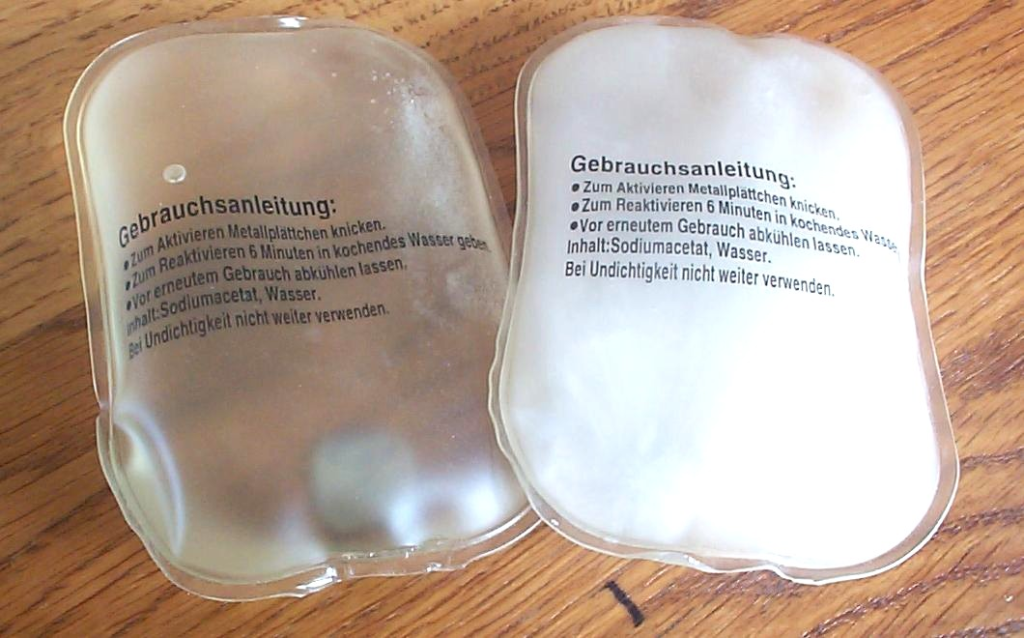
As per the recently published report by MarketsandMarkets™, the “Phase Change Material Market by type (Inorganic, Organic), Application (Building &Construction, HVAC, Cold Chain &Packaging, Electronics, Textile) and Region (North America, Europe, APAC, Rest of World) – Global Forecasts to 2026“, size is projected to reach USD 1,004 million by 2026, at a CAGR of 16.0% from USD 477 million in 2021.
This growth is primarily triggered by the increasing demand for energy savings and regulations for reduction of greenhouse gas emission. Europe is the largest phase change material market due to the demand from the building & construction application and stringent government regulations regarding carbon emissions. The initiatives of governments for the construction of green buildings boosted market growth as phase change material helps in saving carbon credits allotted to each building. The cost of energy is also high in Europe, which drives demand for phase change material in the region.
Download PDF Brochure:https://www.marketsandmarkets.com/pdfdownloadNew.asp?id=1087
Browse
- 241 Market data Tables
- 66 Figures
- 252 Pages and in-depth TOC on “Phase Change Material Market – Global Forecast to 2026″
This report also provides a comprehensive analysis of the companies listed below:
The phase change material market is dominated by key players such as Cold Chain Technologies, Inc. (US), Croda International Plc. (UK), Microtek Laboratories Inc. (US), Sasol Limited (South Africa), PureTemp LLC. (US), Henkel AG & Company KGAA (Germany), Outlast Technologies LLC (US), Advansa B.V. (The Netherlands), AI Technology Inc. (US), CoolComposites Inc. (US), Cryopak Inc. (Canada), Datum Phase Change Ltd. (UK), IoLiTec-Ionic Liquids Technologies GmbH (Germany), Salca B.V. (The Netherlands), Insolcorp. Inc. (US), Phase Change Energy Solutions Inc. (US), Climator Sweden AB (Sweden), Ciat Group (France), Honeywell Electronic Materials, Inc. (US), Phase Change Materials Products Ltd. (UK), Rubitherm Technologies GmbH (Germany), and Teappcm (India), among others. These players have a strong foothold in the global phase change material market as well as a strong distribution network across the globe.
Recent Developments in Phase Change Material Market
- In January 2019, PureTemp LLC launched a temperature-control fabric coating to control ambient temperature swings in apparel, footwear, bedding, safety, medical, workwear, and industrial applications.
- In March 2019, Croda International introduced two new biobased PCMs, CrodaTherm 32 and CrodaTherm 37. These two new products provide high latent heat, narrow melting and crystallization points, and high cycle stability.
Request Sample Pages: https://www.marketsandmarkets.com/requestsampleNew.asp?id=1087
Organic was the largest phase change material type of phase change material market.
The organic PCM market is majorly segregated into paraffin and non-paraffin based PCMs. Paraffin based PCMs are commonly used across various applications. Organic PCMs majorly constitute paraffin- and fatty acid-based PCMs derived from non-renewable sources, such as crude oil and slack wax. The advantages of organic-based PCMs include chemical stability, non-corrosive and non-toxic properties, high latent heat of fusion, and almost negligible super cooling. Another key advantage of organic PCMs is that they can be microencapsulated, which makes them viable in various applications, such as textiles and thermal energy storage (TES) applications, among others.
Building & Construction is estimated to be the second-largest application of the phase change material market during the forecast period.
Building & construction refers to new building development and construction activities in the study. This segment forms a major application of phase change materials, due to the increasing need for temperature control in buildings, and the construction industry’s trend of using modern & lightweight architecture. The use of phase change materials in building applications has been commercialized only recently. In the building & construction application, phase change materials are used to make insulating panels, paints, wall coverings, roofing panels, playing fields, and raised floor panels. The use of phase change materials in buildings offers a number of advantages, such as lightweight architecture and low cooling & heating needs, resulting in energy saving and comfort.
North America is projected to be the fastest growing market for phase change material during the forecast period.
The Growth of the North American phase change material market is driven majorly by initiatives taken by bodies such as the Emerging Technologies Coordinating Council and the National Renewable Energy Laboratory (NREL) of the US Department of Energy (DoE). These institutes help market players in incorporating phase change materials in their products by performing tasks, such as site selection, coordination, and evaluation of tests on technology performance, risks, and costs. Phase change material-based products have a strong demand in the region. The retrofit market, growth in the construction industry, development of green buildings, and increase in energy efficiency codes and building specifications are expected to drive the phase change material market in the region.
